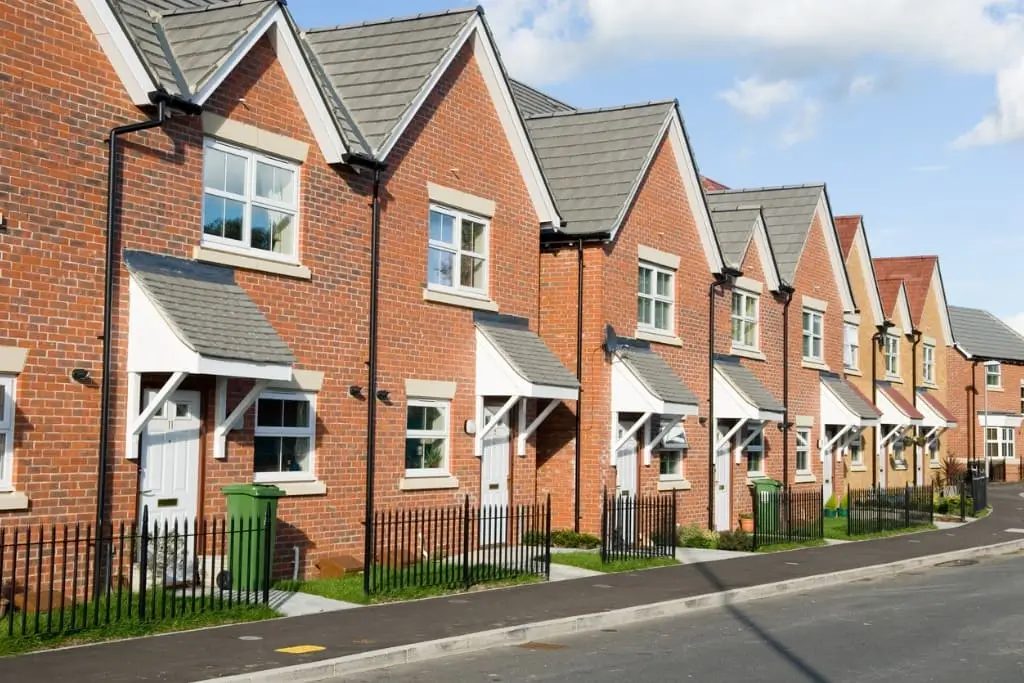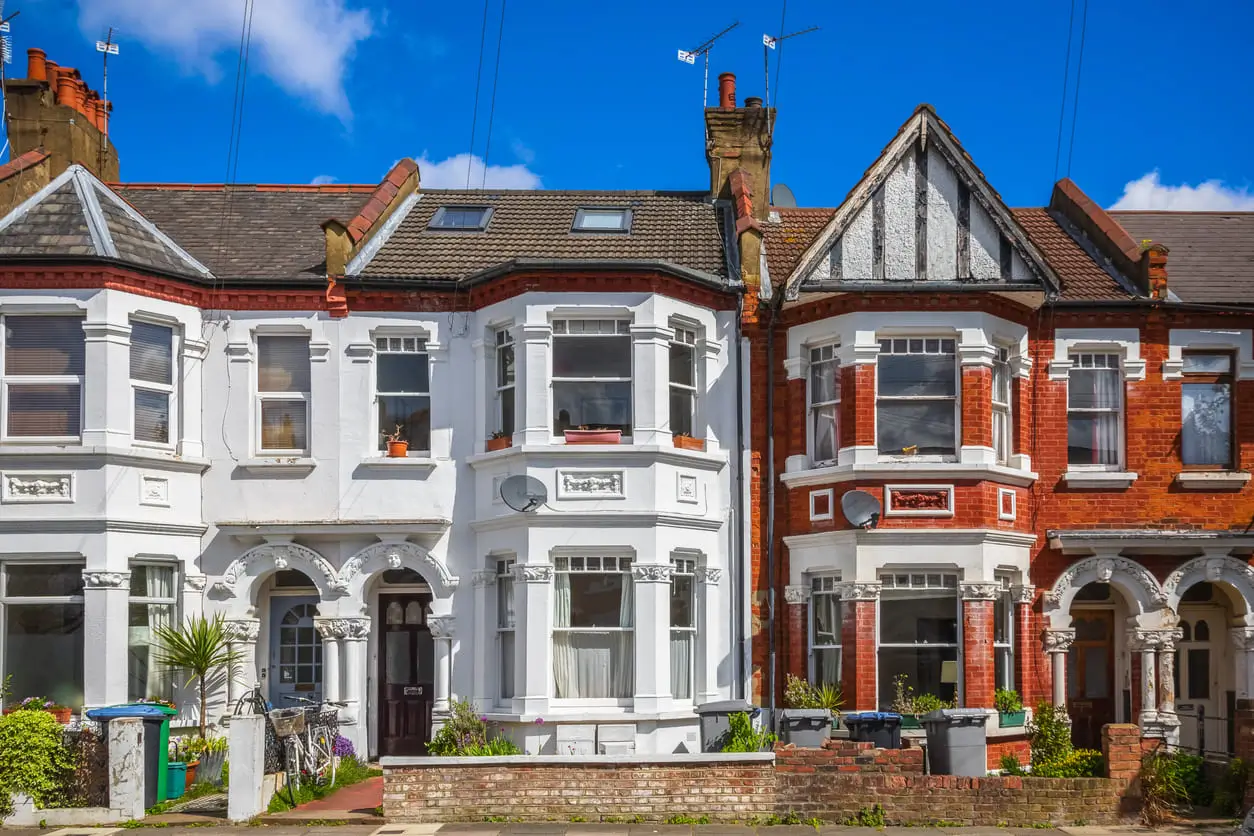Building Surveys & RICS Valuations in London
Your Local Chartered Building Surveyors in London
Areas we cover in London
Welcome to Your Trusted Building Surveyors in Greater London
From the iconic landmarks of Westminster to the trendy neighbourhoods of Shoreditch, CJ Bloor Property Consultants is your reliable partner in the heart of the capital. We offer a bespoke range of services, including RICS Level 2 and Level 3 Home Surveys, as well as RICS Valuations, all carefully crafted to address the distinct property challenges of this cosmopolitan city. Whether it’s the historic Georgian terraces in Mayfair or the modern apartment complexes in Canary Wharf, our expertise spans a broad spectrum of property types.
Level 2 Homebuyers Survey in London
If you’re contemplating a promising new investment in dynamic areas like Shoreditch or considering a long-term residence in historic Chelsea, our RICS Home Survey Level 2 offers an excellent starting point. This survey gives you a thorough overview of your property, spotlighting any immediate issues while also alerting you to potential future concerns.
Why Choose RICS Home Survey Level 2 with Us in London?
- Customised for London’s Varied Architecture: Our Level 2 surveys are designed to reflect the architectural diversity of London, from heritage buildings in Kensington to modern high-rises in the City.
- Unambiguous Reporting: Clarity is our watchword when it comes to our Level 2 reports. Although detailed, these reports are structured for easy comprehension, allowing you to rapidly yet comprehensively understand the condition of your property.
- Economical Choice: Particularly well-suited for modern or well-kept properties in London, our Level 2 surveys offer a cost-effective solution without compromising on the quality of insights.
Level 3 Building Survey in London
For a detailed and comprehensive assessment of a property’s structure and condition, our RICS Home Survey Level 3 is the perfect choice. This survey delves deeply into the property, providing an extensive analysis that covers all aspects essential for a thorough understanding of its state and potential issues.
Why Opt for RICS Home Survey Level 3 with Us in London?
- Rigorous Investigation: Our Level 3 surveys are performed with the utmost precision, focusing on the structural integrity of the property and underlining areas that may require either immediate or future attention.
- Informed by Local Expertise: Armed with a deep understanding of London’s multifaceted property landscape, our Level 3 surveys are adapted to local variations, giving you a clear edge in making well-informed property choices.
- Practical and Insightful: While our Level 3 reports are comprehensive, they’re also brimming with actionable recommendations, equipping you with a strong foundation for informed property decision-making.
RICS Valuations in London
In a market as complex and dynamic as London, having accurate property valuation is essential. Our RICS Valuation Service gives you an impartial, rigorously calculated property valuation, providing you with crucial data for every aspect of your property transactions.
Key Benefits of Choosing Our RICS Valuation Service in London
- Strict Adherence to RICS Guidelines: Each valuation we carry out is in strict compliance with RICS standards, giving you a report you can trust for its reliability and accuracy.
- Locally Informed: Drawing upon the most current London property data, our valuations remain both current and pertinent to the London area.
- Versatile Utility: Our valuation reports cater to various needs, including Help to Buy, Shared Ownership, Probate, Capital Gains Tax, and Private Sales.
At CJ Bloor Property Consultants, we’re dedicated to providing a bespoke service that meets your unique needs in London. Contact us to find out how we can assist you.
Key Information: London
Property Hotspots in London
Navigating the London property market can be both exciting and overwhelming due to its dynamic nature. Knowing the hotspots where property values are on the rise is essential for making an informed decision, whether you’re a first-time buyer, seasoned investor, or simply considering a move within the capital.
Key Points:
- Prime Areas: Kensington, Chelsea, and Westminster remain strongholds for luxury properties.
- Emerging Locations: Areas like Hackney and Newham are becoming increasingly popular due to redevelopment projects and improved transport links.
- Outer Zones: Suburbs like Richmond and Kingston are attracting families looking for more space without sacrificing accessibility to central London.
- Rental Yields: For buy-to-let investors, Tower Hamlets and Camden offer high rental yields.
Why it Matters:
- Investment Potential: Knowing where property values are likely to increase can yield high returns on investment.
- Quality of Life: Each hotspot offers unique amenities, from cultural sites to green spaces, which can significantly impact your lifestyle.
- Transport Links: Proximity to transport options often dictates both property prices and rental demand.
Since London’s property market is always evolving, staying updated on the current hotspots will serve you well in making a strategic investment or home purchase.
Sources:
School Catchment Areas in London
Understanding school catchment areas is not just crucial for families but also for property investors and homebuyers of all kinds. The quality of nearby schools can significantly affect property values and long-term investment potential.
Key Points:
- Outstanding Schools: Boroughs like Camden and Wandsworth have multiple schools rated ‘Outstanding’ by Ofsted, driving up local property values.
- Academic Pressure: Some areas, such as Richmond and Kingston upon Thames, have highly competitive catchment areas due to the presence of top-ranking schools.
- Diverse Options: London offers a range of educational choices from state schools to private and international institutions, each affecting local property values differently.
Why it Matters:
- Future-Proofing: A home in a good catchment area not only serves the educational needs of your children but can also hold its value well.
- Rental Potential: Properties in catchment areas of top schools often yield higher rents.
- Local Amenities: Schools often come with additional local amenities like sports facilities and parks, which can enhance community life.
Being well-informed about school catchment areas can make a significant difference in both the property you choose and its future value.
Sources:
Dominant House Types in London
Recognising the dominant house types in an area can give you a better understanding of the local culture, history, and the sort of lifestyle you can expect. For example, the style of housing can reveal a lot about the area’s past and how it has evolved, providing invaluable insights for prospective property buyers or investors.
Key Points:
- Terraced Houses: Areas like Islington and Fulham are known for their Georgian and Victorian terraced homes.
- Luxury Apartments: The City and Canary Wharf areas predominantly feature modern luxury apartments catering to professionals.
- Suburban Detached: Places like Richmond and Hampstead offer more green spaces and larger, detached homes, often with gardens.
- Converted Flats: Many older, grand homes in areas such as Notting Hill have been converted into stylish flats.
Why it Matters:
- Investment Potential: Understanding the prevalent house types can help you make a more informed decision when investing in property.
- Lifestyle Fit: The style and size of the home can significantly influence your quality of life, particularly in a bustling city like London.
- Maintenance Costs: Older homes like Victorian terraces may have higher maintenance costs, while modern apartments often come with service charges.
Being aware of these factors can significantly guide your property decisions, ensuring you find a house that truly becomes a home or a worthwhile investment.
Sources:
Soil Types in London
Understanding the soil type in your desired location is not just for gardeners. It’s a vital consideration for structural stability and may affect the sort of construction or extension projects that are feasible. Knowing what lies beneath the surface can save you both time and money in the long run.
Key Points:
- Clay Soils: Much of London sits on London Clay, which is particularly impermeable. This can be problematic for drainage but is often fertile for gardens.
- Chalky Soils: Areas in South London, like Croydon, often have chalky soil. This type of soil is alkaline and may not be suitable for all types of plants.
- Sandy Soils: Some areas like Greenwich and along the Thames have sandy soils, which offer good drainage but may lack nutrients.
- Loamy Soils: These are the gold standard for gardening, offering a balanced mix of sand, silt, and clay. However, they’re less common in the city proper.
Why it Matters:
- Building Considerations: Different soil types can influence the cost and feasibility of building extensions or undertaking significant landscaping work.
- Gardening: The soil type will dictate what kinds of plants you can grow and how much you’ll need to water or fertilise.
- Drainage: Soil types like clay can have poor drainage, which might require additional considerations for stormwater management.
Knowing the soil type is another layer in understanding your property and its surroundings, influencing everything from your garden’s success to your home’s long-term stability.
Sources:
Green Spaces in London
When it comes to enhancing the quality of life in a busy metropolis like London, green spaces are more than just a luxury; they’re an essential part of urban living. Whether you’re looking for a quiet spot to read, a place to exercise, or a playground for your children, knowing the green spaces in your area can make all the difference.
Key Points:
- Royal Parks: London is home to eight Royal Parks including Hyde Park, Regents Park, and Greenwich Park. These are large, well-maintained spaces perfect for leisure and activities.
- Local Parks: Every borough has its local parks and playgrounds, offering a convenient spot for residents. Parks like Victoria Park in Tower Hamlets or Battersea Park in Wandsworth offer green retreats from city life.
- Community Gardens: Places like the Phoenix Garden in Covent Garden and the Dalston Eastern Curve Garden offer community-led green spaces where you can volunteer or just enjoy the tranquillity.
- Riverside Walks: The Thames Path and other canals offer a different kind of green space, with waterside walking and cycling routes.
Why it Matters:
- Wellbeing: Regular access to green spaces is known to improve mental health.
- Exercise: These areas often contain sporting facilities, walking routes, and cycling paths.
- Social Life: Parks are communal spaces where you can meet people, host gatherings, and engage in community events.
- Children: Playgrounds and open spaces are crucial for children’s physical development and social skills.
Knowing the green spaces in your area can significantly influence your lifestyle, from your exercise habits to your social interactions, and even your mental well-being.
Sources:
Average House Values in London
Understanding the average house values in your desired area isn’t just about knowing how much you’ll need to pay. It’s also about understanding what you’re getting for your money, and how the value might change over time. In London, house values can vary dramatically between boroughs, and even from one street to the next, making this information particularly valuable.
Key Points:
- Central London: Areas like Mayfair, Knightsbridge, and Belgravia are among the most expensive, with average property values often exceeding £2 million.
- Outer Boroughs: In contrast, more affordable options can be found in outer boroughs such as Barking and Dagenham, where the average house price hovers around £300,000.
- Emerging Hotspots: Areas like Hackney and Peckham have seen a significant increase in property values due to regeneration and growing popularity.
- Type of Property: The value also depends on the type of property, with flats generally being more affordable than houses.
Why it Matters:
- Investment: Understanding house values can help you make a more informed investment, potentially offering a better return in the future.
- Budget Planning: Knowing the average values will help you establish a realistic budget for buying or renting.
- Quality of Life: Property value often correlates with the quality of local schools, crime rates, and amenities, helping you make a more holistic decision.
- Negotiation: Having this knowledge at hand can empower you during negotiations, potentially saving you money.
Average house values give you a snapshot of the market, allowing you to make informed decisions that impact not only your finances but your lifestyle as well.
Sources:
Local Infrastructure in London
When considering a move to London, understanding the local infrastructure is not just a box-ticking exercise; it’s crucial for assessing how well an area can meet your lifestyle and convenience needs. Good infrastructure can significantly reduce the stresses of city living and improve your overall quality of life.
Key Points:
- Transport: London boasts an extensive public transport network including buses, trams, the London Underground, and even river services. The importance of proximity to a Tube station or bus stop can’t be overstated for daily commuting.
- Healthcare: The city offers a mix of public and private healthcare facilities. Accessibility to hospitals, GPs, and specialists can greatly impact your well-being.
- Education: London is home to some of the world’s best educational institutions, from primary schools to renowned universities like Imperial College London and the London School of Economics.
- Utilities: Internet, gas, and electricity are generally reliable throughout the city. However, some older properties may have outdated utilities that require upgrading.
- Public Services: Amenities like libraries, police stations, fire departments, and postal services also form part of the local infrastructure.
Why it Matters:
- Convenience: Good local infrastructure saves you time and effort in daily life, making errands and commuting less of a chore.
- Well-being: Quick access to healthcare and emergency services can be life-saving and contributes to peace of mind.
- Long-term Planning: If you’re considering starting a family, nearby schools and parks are essential for children’s development and well-being.
- Resale Value: Areas with robust infrastructure often have higher property values and are easier to resell or rent out.
Understanding the local infrastructure is key to making an informed decision about where to live, which is why it should be a fundamental part of your property search in London.
Sources:
Flood Risks in London
Understanding the flood risks associated with a particular area in London isn’t a mere cautionary measure; it’s vital for your long-term safety and financial security. Flood risks can impact insurance premiums, property values, and your peace of mind.
Key Points:
- River Thames: The Thames is the primary source of flood risk in London, especially in the areas along its banks. Flood defences like the Thames Barrier offer some protection, but risks remain.
- Surface Water: Heavy rainfall can lead to surface water flooding, particularly in areas with poor drainage systems.
- Groundwater: In some areas of London, notably in the south, high groundwater levels can lead to flooding.
- Sewer Flooding: London’s ageing sewer system can also cause flooding during heavy rain. Some boroughs are more prone to this than others.
Why it Matters:
- Safety: Knowing the flood risks can guide your decisions on property purchase, especially if you have young children or elderly family members.
- Financial Implications: Flooding can cause significant damage to property, which not only affects your living conditions but can also have long-lasting financial repercussions.
- Insurance: Properties in high-risk flood zones may require additional insurance, which can be costly.
- Property Value: Knowledge of an area’s flood risk can either be a negotiating point when buying a property or an essential factor when considering resale value.
Being well-informed about the flood risks in your chosen area is an indispensable step in the property buying process. This knowledge will allow you to make the right decisions to safeguard your family and financial investment.
Sources:
Mining Activity in London
If you’re considering property investment in London, it’s prudent to be informed about mining activity, although this is generally less of a concern compared to other regions in the UK. In the capital, historical mining activities are mostly confined to the extraction of clay for brick-making and small-scale gravel and sand extraction.
Key Points:
- Clay Extraction: Certain areas in North London have a history of clay extraction, particularly for the brick-making industry.
- Gravel and Sand: Parts of West London were once sites for gravel and sand mining, although these have long since ceased.
- Coal and Metal Mining: Unlike northern parts of the UK, London has little history of coal or metal mining, making it less of a concern for property buyers in the area.
- Regeneration: Many old mining sites have been regenerated and pose no threat to new developments.
Why it Matters:
- Structural Integrity: Understanding the past mining activities can help you evaluate the structural integrity of a building or a piece of land.
- Value Assessment: Knowing the history of mining activities can inform your negotiation during the property purchasing process.
- Legal Requirements: In some cases, the land may need a clean bill of health from environmental agencies, which could impact the timeline of your property investment.
- Future Development: While mining is not an ongoing activity in London, being aware of the past allows you to be more informed about the land’s suitability for future development or renovation.
Having accurate and comprehensive information about past mining activities in your chosen London area can add another layer of confidence to your property investment decisions.
Sources:
Our Services
Click on the image for more information

RICS Home Survey
Level 2
Choose the RICS Level 2 Home Survey for modern properties that are in reasonable condition to gain a thorough yet accessible review of the property's condition. Identify minor to moderate issues, so you can negotiate price or plan for future repairs.

RICS Home Survey
Level 3
The RICS Level 3 Home Survey is the most comprehensive inspection available, suitable for older properties and ones that have been significantly extended. Delve deep into structural integrity and potential defects to make an informed decision and safeguard your investment.

RICS Valuation
Reports
Need an accurate and reliable market value for your property? Obtain an in-depth RICS Valuation Report, meticulously conducted by certified valuation professionals. Ideal for a range of purposes including Help to Buy, Shared Ownership, Probate, Matrimonial, Capital Gains Tax, and more.

Commercial Property
Valuations
Obtain a Commercial Property Valuation from our certified experts, vital for sales, acquisitions, and compliance. Our valuations offer key insights into your property's worth, supporting strategic decisions and ensuring market readiness. Ideal for understanding investment value.
Why Choose Us
Local
Expert surveyors with superb local knowledge.
Prompt
Efficient service and prompt report delivery.
Quality
Outstanding, consistently 5-star rated service.
Affordable
Top-quality, affordable pricing for assessments.
Client Testimonials








